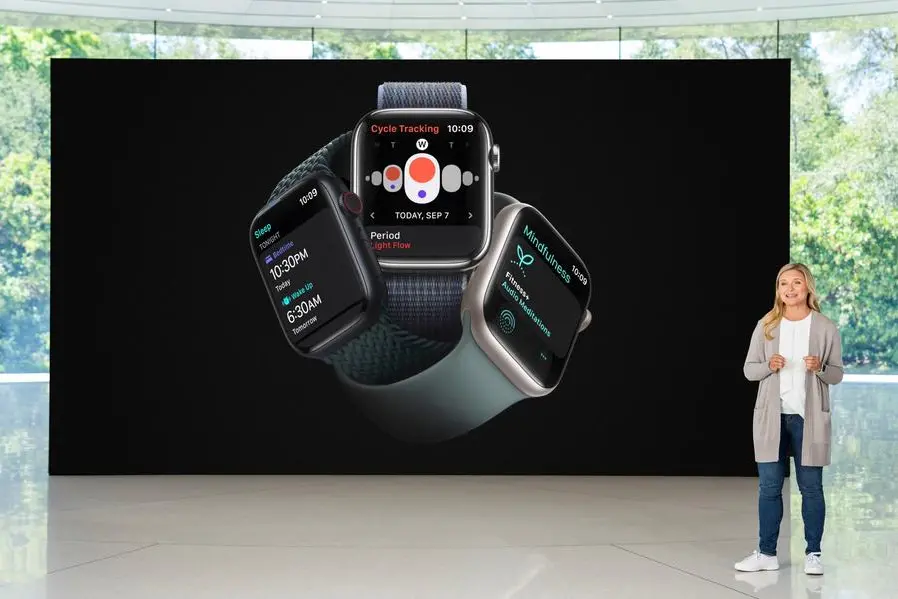PHOTO
UAE - Across the world, cardiovascular diseases (CVDs) are one of the leading causes of mortality, healthcare experts have said. An estimated 17.9 million people perished due to CVDs in 2019, contributing to 32 per cent of deaths globally.
Out of all the people who died from CVD, 85 per cent suffered a stroke and heart attack. Further, a quarter of these CVD deaths occur in low and middle-income countries, according to the World Health Organisation (WHO).
Tech companies, including Apple Inc., have been using actionable and science-based insights to empower consumers to learn about and take control of their health. Devices like the Apple Watch and the iPhone offer personal health and fitness features that offer actionable, science-based insights.
"Apple Watch offers an extensive set of features focused on heart health. Over time, Apple Watch has alerted users worldwide of potential signs of atrial fibrillation (AFib) and helped many more establish everyday habits to keep their heart healthy over the long term," said the company.
The latest Apple Watch S8 has added new safety features and a temperature sensor for intriguing uses for women's health and family planning. However, some exciting features that those with poor heart health can use with the Apple Watch.
1. High and low heart rate notifications
Apple Watch checks for unusually high or low heart rates in the background, which could be signs of a severe underlying condition. It could help users identify situations that may warrant further evaluation.
If a user's heart rate is above 120 bpm or below 40 bpm while appearing inactive for 10 minutes, they will receive a notification. Users can adjust the threshold bpm or turn these notifications on or off. All heart rate notifications — along with the date, time, and heart rate — can be viewed on the iPhone Health app.
2. Irregular rhythm notifications
The irregular rhythm notification feature on the Apple Watch will occasionally look at the heartbeat to check for an irregular rhythm that might be suggestive of atrial fibrillation (AFib).
Unfortunately, the AFib feature is not available in the UAE.
The irregular rhythm notifications use the optical heart sensor to detect the pulse wave at the wrist and look for variability in beat‑to‑beat intervals when the user is at rest. Suppose the algorithm repeatedly detects an irregular rhythm suggestive of AFib. In that case, users will receive a notification and the date, time, and beat‑to‑beat heart rate will be recorded in the Health app.
AFib is a type of irregular heart rhythm where the heart's upper chambers beat out of sync with the lower chambers. Some individuals with AFib do not experience any symptoms. Others experience symptoms that could include rapid heartbeat, palpitations, fatigue, or shortness of breath, and Apple sad in a press relase.
3. ECG app
With the ECG app, users who experience symptoms, such as rapid or skipped heartbeat, can capture an ECG and record their symptoms. The ECG app uses the electrical heart sensor built into the Digital Crown and the back crystal to record a single-lead ECG.
The ECG app then provides a result of sinus rhythm, atrial fibrillation, high heart rate, inconclusive, or poor recording. It prompts the user to enter symptoms such as rapid or pounding heartbeat, dizziness, or fatigue.
The recorded waveform, results, date, time, and any symptoms can be exported from the Health app as a PDF to share with a clinician.
In a clinical study using a 12-lead ECG as a reference device, the ECG app demonstrated 99.3 per cent specificity in classifying sinus rhythm and 98.5 per cent sensitivity in classifying AFib for the classifiable results.
4. Cardio Fitness
Cardio Fitness estimates VO2 Max, or your body's ability to intake oxygen during exercise. "In the past, this was typically only measured for endurance athletes or - on the other side of the spectrum - people with serious conditions like Heart Failure. These tests are typically done in the clinic and can be quite intense for the average person," said the release.
However, the American Heart Association recognizes VO2 Max as a powerful predictor of overall health. We are excited to bring this technology to all users. Apple Watch can give you a scientifically validated estimate of VO2 Max, even at lower levels of exercise, for insights into your overall wellness.
Users can even opt-in to receive a notification if their classification drops to "low," which is associated with severe long-term health conditions risks. Fortunately, it is something you can improve by exercising more frequently or rigorously and efficiently track along the way.
Copyright © 2022 Khaleej Times. All Rights Reserved. Provided by SyndiGate Media Inc. (Syndigate.info).




















